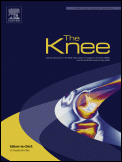
Arthroplasty
Two-year migration and micromotion comparable between CR and PS Triathlon TKA designs
This report has been verified
by one or more authors of the
original publication.
Knee. 2014 Oct;21(5):949-54
60 patients undergoing total knee arthroplasty were randomized to surgery with either the Triathlon cruciate-retaining (CR) total knee system or the Triathlon posterior-stabilized (ie. cruciate-sacrificing; PS) total knee system. The purpose of this study was to evaluate migration and micromotion of the tibial tray between the two devices for up to two years after surgery. In terms of translation, there was no significant difference between groups in medial-lateral translation, although significant differences were found in caudal-cranial translation and posterior-anterior translation. In PS prostheses, migration was more cranially and posteriorly, while CR prostheses migrated more caudally and anteriorly. No significant differences between groups were observed in component rotation/ micromotion and clinical outcome over 2-year follow-up.
Unlock the full article
Get unlimited access to OrthoEvidence with a free trial
Start TrialCritical appraisals of the latest, high-impact randomized controlled trials and systematic reviews in orthopaedics
Access to OrthoEvidence podcast content, including collaborations with the Journal of Bone and Joint Surgery, interviews with internationally recognized surgeons, and roundtable discussions on orthopaedic news and topics
Subscription to The Pulse, a twice-weekly evidence-based newsletter designed to help you make better clinical decisions
Exclusive access to original content articles, including in-house systematic reviews, and articles on health research methods and hot orthopaedic topics
Or continue reading this full article
Register Now

Subscribe to "The Pulse"
Evidence-Based Orthopaedics direct to your inbox.





































